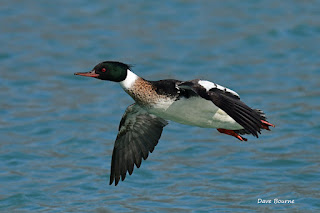The Sandwich Tern is a sleek, medium-sized tern with a ragged black crest and a gleaming black bill with a sharp yellow tip. It's smaller and slimmer than a Royal Tern, a species it often nests alongside in busy, shrieking colonies along the barrier islands of the southeastern U.S.

Sunday, April 30, 2023
Sandwich Tern
The Sandwich Tern is another bird we observed on the gorgeous beaches of Cayo Coco Cuba. Other terns commonly seen are Royal, Caspian and Least Terns.
The Sandwich Tern is a sleek, medium-sized tern with a ragged black crest and a gleaming black bill with a sharp yellow tip. It's smaller and slimmer than a Royal Tern, a species it often nests alongside in busy, shrieking colonies along the barrier islands of the southeastern U.S.
The Sandwich Tern is a sleek, medium-sized tern with a ragged black crest and a gleaming black bill with a sharp yellow tip. It's smaller and slimmer than a Royal Tern, a species it often nests alongside in busy, shrieking colonies along the barrier islands of the southeastern U.S.
Friday, April 28, 2023
Black-necked Stilt
We have just returned from our fourth trip to Cuba. Our third time at Cayo Coco. Over the next week or two I hope to showcase some of the cool birds we observed.
The Black-necked Stilt is a tall but small-bodied shorebird with very long legs, a long neck, small head, and thin, straight bill.
The Black-necked Stilt is a tall but small-bodied shorebird with very long legs, a long neck, small head, and thin, straight bill.
Friday, April 14, 2023
Ruddy Duck
I recently had the opportunity to photograph a pair of Ruddy Ducks at Wawanosh Wetlands.
Ruddy Ducks are compact, thick-necked waterfowl with seemingly oversized tails that they habitually hold upright. Breeding males are almost cartoonishly bold, with a sky-blue bill, shining white cheek patch, and gleaming chestnut body.
Pleistocene fossils of Ruddy Ducks, at least 11,000 years old, have been unearthed in Oregon, California, Virginia, Florida, and Illinois. Cornell All About Birds
This widespread duck breeds mostly in the prairie pothole region of North America and winters in wetlands throughout the U.S. and Mexico.
Pleistocene fossils of Ruddy Ducks, at least 11,000 years old, have been unearthed in Oregon, California, Virginia, Florida, and Illinois. Cornell All About Birds
This widespread duck breeds mostly in the prairie pothole region of North America and winters in wetlands throughout the U.S. and Mexico.
Wednesday, April 12, 2023
Snapping Turtle
Although there were three enormous Snapping Turtles sunning along the long island shoreline in Lake Chipican this morning, this relatively small Snapper looked rather prehistoric in it's pose. This Snapper's carapace was perhaps only 6-8 inches long.
Monday, April 10, 2023
Red-breasted Merganser
Yesterday afternoon there were over 250 Red-breasted Mergansers mixed in with a dozen Common Loons, some Buffleheads, and some Horned Grebes in the North Slip here in Sarnia.
Saturday, April 8, 2023
Horned Grebe
Observed a dozen or more Horned Grebes and at least 26 Common Loons in Sarnia Bay this afternoon.
Friday, April 7, 2023
Canadian Beaver
Yesterday we observed a Beaver in Lake Chipican, Sarnia.
Interestingly, the first fossil records of beaver are 10 to 12 million years old in Germany, and they are thought to have migrated to North America across the Bering Strait. The oldest fossil record of beavers in North America are of two beaver teeth near Dayville Oregon that are 7 million years old.
Interestingly, the first fossil records of beaver are 10 to 12 million years old in Germany, and they are thought to have migrated to North America across the Bering Strait. The oldest fossil record of beavers in North America are of two beaver teeth near Dayville Oregon that are 7 million years old.
Wednesday, April 5, 2023
American Bittern
An American Bittern showed up in Canatara Park today and offered up some nice photo opportunities.
We watched as the Bittern creeped along the creek shoreline turning over leaves and underbrush searching for worms.
We watched as the Bittern creeped along the creek shoreline turning over leaves and underbrush searching for worms.
Monday, April 3, 2023
Cooper's Hawk
The Cooper’s Hawk is a medium-sized hawk with the classic accipiter shape: broad, rounded wings and a very long tail.
Cooper’s Hawks fly with a flap-flap-glide pattern typical of accipiters. Even when crossing large open areas they rarely flap continuously.
Another attack maneuver is to fly fast and low to the ground, then up and over an obstruction to surprise prey on the other side.
Saturday, April 1, 2023
Yellow-bellied Sapsucker
Yellow-bellied Sapsuckers returned to our area today with numerous sightings posted at several locations.
The Yellow-bellied Sapsucker makes two kinds of holes in trees to harvest sap. Round holes extend deep in the tree and are not enlarged. The sapsucker inserts its bill into the hole to probe for sap. Rectangular holes are shallower, and must be maintained continually for the sap to flow. The sapsucker licks the sap from these holes, and eats the cambium of the tree too.
Cornell All About Birds
Subscribe to:
Posts (Atom)




























